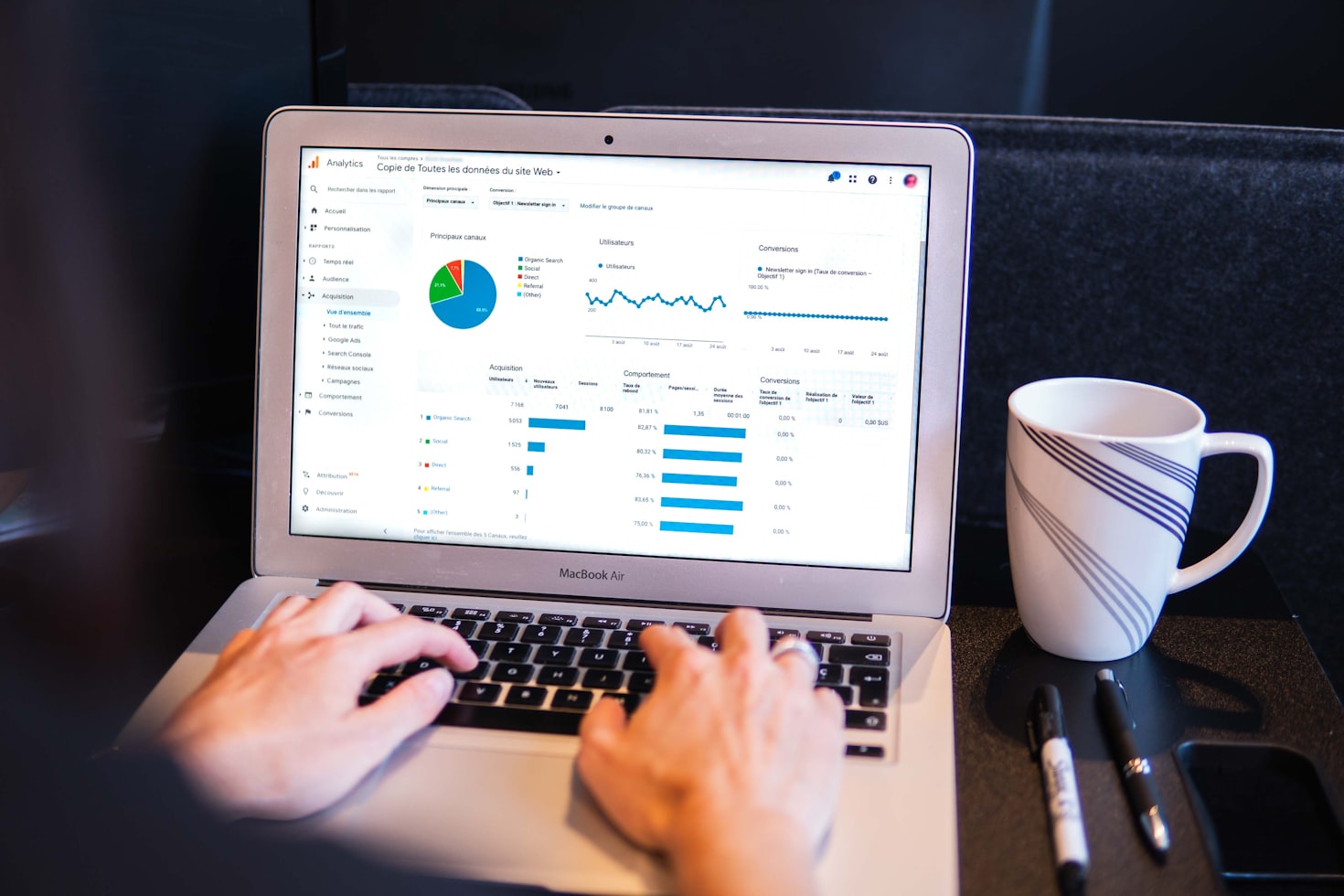Amazon advertising is essential for e-commerce brands in 2023. With over 200 million monthly visitors, Amazon provides unparalleled reach for sellers. However, visibility is a constant challenge with millions of product listings on Amazon. This is where Amazon PPC (Pay-Per-Click) comes in. PPC ads enable you to promote your products right on Amazon search results and product pages. By only paying when shoppers click your ads, Amazon PPC provides a cost-effective way to boost visibility.
In this article, we’ll explore how to leverage Amazon PPC automatic campaigns to enhance product discovery and sales.
Key Takeaways
- Amazon PPC is essential for e-commerce brands to boost visibility and drive sales on the platform.
- Automatic campaigns on Amazon utilize algorithms and machine learning to optimize ad placements and targeting.
- Automatic campaigns help improve targeting, cost optimization, time efficiency, scalability, and provide performance insights.
- Using automatic targeting for Sponsored Products ads can help reach a wider audience and drive more conversions.
- Strategies for optimizing automatic targeting include studying keyword metrics, adding negative keywords, transferring winning keywords to manual campaigns, adjusting bids based on performance, refining ad copy, and allowing low-performing keywords to phase out.
- Consistent monitoring and optimization of PPC campaigns are key to maximizing success on Amazon.
Brief Overview of Amazon PPC

Amazon PPC refers to sponsored ads on Amazon to promote products. It includes Sponsored Products, Sponsored Brands and Sponsored Display ad formats. With PPC, sellers bid for keywords relevant to their products. When shoppers search for these terms on Amazon, your ads are shown at the top or side of the results. You pay only when shoppers click your ad.
Key PPC metrics are:
- Advertising Cost of Sales (ACoS) – The percentage of sales spent on ads. Lower ACoS is better.
- Attributed Sales – Total sales generated by the ad. Maximizing this is the goal.
- Impressions – How often does your ad show? More impressions can lead to more clicks and sales.
- Clicks – When shoppers click your ad. More clicks likely mean more attributed sales.
Importance of PPC for Amazon Sellers
With the exponential growth of e-commerce, Amazon has become the first stop for online shopping. Reports show that over 197 million people shop on Amazon every month. For sellers, tapping into this vast customer base is crucial.
However, Amazon lists over 600 million products. Standing out requires cutting through the noise. This is where sponsored ads make a difference. PPC ads help showcase your listings to interested buyers. Top sponsored products can receive up to 10X more clicks than organic results.
Without ads, you’re missing out on visibility and sales. Well-optimized PPC campaigns keep your brand discoverable amidst the sea of competitors. The incremental sales generated usually provide a lucrative return on ad spend. For shops of all sizes, investing in Amazon PPC is key to sustaining growth on this platform.
FosterFBA’s 4-step PPC Scaling Training is designed to help Amazon sellers effectively scale their Pay-Per-Click (PPC) advertising campaigns. This provides sellers with a step-by-step approach to optimize their PPC strategies and maximize their sales potential on the platform. Sign up for free!
Definition and Purpose of Automatic Campaigns

In the world of digital marketing, automatic campaigns have become an essential tool for businesses to reach their target audience effectively. These campaigns, also known as automated campaigns or programmatic advertising, are designed to streamline the advertising process by using algorithms and machine learning to optimize ad placements and targeting. In this blog section, we will explore the definition and purpose of automatic campaigns in detail.
What are Automatic Campaigns?
Automatic campaigns are a type of digital advertising campaign that uses automated technology to manage and optimize ad placements. Unlike manual campaigns, where advertisers manually select targeting options and bid on ad placements, automatic campaigns rely on algorithms and machine learning to make these decisions automatically. This automation allows for real-time adjustments based on performance data, ensuring that ads are shown to the most relevant audience at the right time.

The Purpose of Automatic Campaigns
The primary purpose of automatic campaigns is to maximize advertising efficiency and effectiveness. By leveraging automation technology, advertisers can achieve the following objectives:
a) Improved Targeting – Automatic campaigns use sophisticated algorithms to analyze user data and behavior patterns, allowing advertisers to target their ads more accurately. This ensures that ads are shown to users who are most likely to be interested in the product or service being advertised, increasing the chances of conversion.
b) Cost Optimization – Automatic campaigns continuously monitor ad performance and adjust bidding strategies in real-time. This optimization helps advertisers achieve their desired goals while minimizing costs. By automatically adjusting bids based on performance data, advertisers can ensure that they are getting the most value for their advertising budget.
c) Time Efficiency – Manual campaign management can be time-consuming, requiring constant monitoring and adjustments. Automatic campaigns eliminate much of this manual work by automating bidding, targeting, and ad placement decisions. This frees up time for advertisers to focus on other important aspects of their marketing strategy.
d) Scalability – Automatic campaigns are highly scalable, allowing advertisers to reach a larger audience without significantly increasing their workload. With automation handling the optimization process, advertisers can easily expand their campaigns to target new markets or increase their reach within existing markets.
e) Performance Insights – Automatic campaigns provide valuable performance data and insights that can be used to refine marketing strategies. By analyzing the data generated by these campaigns, advertisers can gain a deeper understanding of their target audience, identify trends, and make data-driven decisions to improve future campaigns.
How Automatic Campaigns Work on Amazon

If you’re an Amazon seller looking to maximize your advertising efforts, automatic campaigns can be a game-changer. These campaigns utilize Amazon’s powerful algorithms and machine learning capabilities to optimize your ad placements and target the right audience. In this blog section, we will delve into how automatic campaigns work on Amazon, providing you with a better understanding of this effective advertising strategy.
1. Setting Up an Automatic Campaign
To start an automatic campaign on Amazon, you need to navigate to the Advertising Console and select the “Create Campaign” option. From there, choose the “Automatic Targeting” option, which allows Amazon’s algorithms to handle the targeting and bidding decisions for you. You’ll then need to set your daily budget and select the duration of your campaign.
2. Keyword Generation and Targeting
Once your automatic campaign is live, Amazon’s algorithms will analyze your product listing, including its title, description, and backend keywords. Based on this information, the algorithms generate a list of relevant keywords that are likely to drive traffic and conversions for your product. These keywords are used to target potential customers who are searching for products similar to yours.
3. Bid Optimization
Amazon’s algorithms continuously monitor the performance of your automatic campaign and make real-time bid adjustments based on the data collected. The algorithms take into account factors such as click-through rates (CTR), conversion rates, and cost-per-click (CPC) to optimize your bids. This ensures that your ads are shown to the most relevant audience while maximizing your return on investment (ROI).
4. Placement Optimization
In addition to bid optimization, automatic campaigns also optimize ad placements across various placements on Amazon’s platform. This includes product detail pages, search results pages, and even off-Amazon sites within Amazon’s advertising network. The algorithms analyze user behavior and performance data to determine the most effective ad placements for driving conversions.
5. Performance Monitoring and Adjustments
Throughout the duration of your automatic campaign, it’s crucial to monitor its performance regularly. Amazon provides detailed performance metrics, including impressions, clicks, conversions, and advertising costs. By analyzing this data, you can identify trends, make informed decisions, and adjust your campaign settings accordingly. For example, if certain keywords are performing exceptionally well, you may consider adding them to your manual campaigns for more control.
6. Learning and Iteration
One of the key advantages of automatic campaigns on Amazon is the machine learning aspect. As your campaign runs and gathers more data, Amazon’s algorithms learn from this information and become more refined in their targeting and bidding decisions. This iterative process allows for continuous improvement and better campaign performance over time.
A Deep Dive into Automatic Targeting for Sponsored Products Ads
When it comes to running successful sponsored products ads, targeting is key. Automatic targeting is a powerful tool that can help you reach a wider audience and drive more conversions.
Understanding Automatic Targeting
Automatic targeting allows Amazon’s algorithm to determine the best keywords and placements for your ads based on your product information. It takes into account factors such as relevance, search term performance, and customer behavior to deliver your ads to the most relevant audience.
Analyzing Performance Data
To optimize automatic targeting, it’s crucial to analyze the performance data of your campaigns. Dive into metrics such as click-through rates (CTR), conversion rates, and cost per click (CPC) to identify which keywords are driving the most conversions. By understanding which keywords are performing well, you can adjust your bids accordingly to maximize your return on investment (ROI).
Utilizing the Search Term Report
The search term report is a valuable resource that provides insights into the actual search terms that triggered your ads. Regularly reviewing this report allows you to identify irrelevant or low-performing keywords that may be wasting your ad spend. By adding these keywords as negative keywords, you can refine your targeting and improve the precision of your ads.
Negative Keywords Optimization
Optimizing negative keywords is an essential step in improving the effectiveness of automatic targeting. By continuously monitoring and updating your negative keyword list, you can prevent your ads from showing up for irrelevant searches. This helps to ensure that your budget is allocated towards reaching the most relevant audience, increasing the chances of conversions.
Combining Manual and Automatic Targeting
While automatic targeting can be highly effective, combining it with manual targeting can provide even better results. Manual targeting allows you to have more control over where your ads appear and which keywords trigger them. By using both strategies in tandem, you can leverage the strengths of each approach and optimize your campaigns for maximum performance.
Regular Monitoring and Optimization
Optimizing automatic targeting is an ongoing process. It’s important to regularly monitor the performance of your campaigns, make adjustments to bids and negative keywords, and test different strategies. By staying proactive and continuously optimizing your ads, you can ensure that your sponsored products campaigns are delivering the best possible results.
FosterFBA is a specialized service that focuses on Amazon listing optimization to help Amazon sellers maximize their success on the platform. With their expertise in understanding Amazon’s algorithms and consumer behavior, FosterFBA can significantly improve the visibility and performance of product listings.

Optimizing Automatic Targeting Sponsored Products Ads
Running an automatic targeting Sponsored Products campaign provides a wealth of data to optimize your PPC strategy. Here are some tips on analyzing the data and making adjustments to boost performance.
Study Your Keyword Metrics
Carefully dig into the search term report for your automatic campaign within Seller Central. This report provides valuable data on how each keyword is performing.
Review keywords sorted by total spend and number of attributed sales. Flag any high-performing keywords that are driving a significant number of conversions for your target products. These keywords should be given priority.
Also, take note of low-performing keywords that have few to no clicks despite high impressions. These are terms that may be irrelevant or have low commercial intent. Look at the click-through rate (CTR) for keywords as well. A low CTR indicates a keyword is not resonating with users despite being shown often.
Add Negative Keywords
Leverage negative keywords to avoid wasted spend on irrelevant queries that trigger your ads. Some examples of keywords to add as negatives:
- Misspellings of your product keywords – e.g. “dog chew tois” instead of “dog chew toys”. This prevents spend going towards irrelevant misspelled searches.
- Generic broad terms – e.g. “pet supplies”. These broad matches often bring low quality traffic that doesn’t convert.
- Competitor brand names – Adding your competitors’ brand names as negatives ensures your ads don’t show for searches specifically seeking their products. Saves budget.
- Unrelated product terms – Add as negatives any keywords totally unrelated to your products to keep your ad targeting highly relevant.
- Out of stock products – If you have products out of stock, add the names as negatives until inventory is replenished. Avoids spend showing ads for unavailable products.
- Geographic mismatched terms – Include geography keywords that don’t match your product availability regions to avoid disappointing users.
Closely analyze search terms reports to uncover more irrelevant keyword themes to add as negatives. This continually refines your campaign’s scope over time.

Transfer Winning Keywords to Manual Campaigns
Transferring winning keywords from automatic targeting to manual campaigns allows for greater customization and control. By selecting keywords that have consistently shown high conversion rates and click-through rates, you can optimize match types, bids, and ad placements for increased efficiency.
Customizing match types ensures that your ads are shown to the most relevant audience, while adjusting bids allows for more budget allocation towards keywords with a higher likelihood of driving conversions. Additionally, manual campaigns provide the opportunity to choose specific ad placements, targeting relevant contexts to attract interested customers. Regular monitoring and optimization of these campaigns is essential to refine strategies and maximize results.
Adjust Bids Based on Performance
Adjusting bids based on performance is a crucial aspect of optimizing manual campaigns. Monitoring metrics such as Advertising Cost of Sales (ACoS) and attributed sales allows you to gauge the effectiveness of your bids. If your goals are not being met and you are not generating enough conversions, it may be necessary to increase your bids. This can help improve your ad’s visibility and attract more potential customers.
Refine Ad Copy
Refining ad copy is essential for improving the relevance and effectiveness of your ads. By updating your ad copy with keywords that align with what shoppers are actively searching for, you increase the chances of your ads appearing in relevant search results. Additionally, leading with your product benefit or offer in the title grabs the attention of potential customers and entices them to click on your ad. This strategic approach to ad copy helps improve click-through rates and ultimately drives more traffic to your product or website.
Let Low Performers Phase Out
Allowing low-performing keywords to phase out is a smart strategy to optimize your advertising budget on Amazon. The platform’s algorithm is designed to stop showing ads for keywords that consistently underperform, ensuring that your budget is allocated towards more effective keywords. This automated optimization process saves you time and effort by gradually eliminating keywords that do not generate desired results, allowing you to focus on those that drive better performance and maximize your return on investment.
Conclusion
Amazon PPC is invaluable for scaling product visibility and sales. Automatic campaigns offer a powerful starting point through Amazon’s expansive keyword targeting. Assess the highest-converting terms and transfer to manual campaigns for greater control.
Consistent optimization and refinement of your PPC strategy is key to staying ahead on Amazon. Monitor campaign metrics daily. Adjust elements like keywords, bids and ad copy to enhance relevancy.
Experiment, test new tactics and leverage data to guide future decisions. With the right foundation of automatic campaigns complemented by precision manual targeting, your Amazon PPC investment will propel sustainable business success.
Supercharge your Amazon sales with FosterFBA’s expert Amazon listing optimization service. Increase visibility, attract more customers, and drive higher conversions. Don’t miss out on maximizing your success on Amazon. Get started today and watch your sales soar!
Let me know if you have any questions about your Ads Strategy. Happy to do a free audit & strategy session of your entire Ad strategy.
Cheers,

Vijay Jacob
Founder, FosterFBA
Helping 7-8 Figure Amazon Sellers grow profitably with their Amazon Advertising
P.S: If you are making over $10K/month and want to take your PPC sales to the next level. We’re offering “done-for-you” Amazon PPC management & consulting services that does just that. You can schedule a free strategy session and audit of your ads to see if we’re a good fit:
FAQs
What is Amazon PPC Automatic Campaign?
Amazon PPC Automatic Campaign is a type of Sponsored Products ad campaign where Amazon’s algorithm automatically selects relevant keywords based on your product listing. This allows sellers to reach potential customers without manually selecting keywords.
How Does Amazon’s Algorithm Determine Relevant Keywords for Automatic Campaigns?
Amazon’s algorithm analyzes the product listing, including the title, bullet points, and description, to identify relevant keywords. It also considers similar products and their associated keywords to optimize the campaign for better reach and conversions
What Are the Benefits of Using Amazon PPC Automatic Campaigns?
Automatic Campaigns help sellers discover new, high-converting keywords that they might not have thought of. It’s an excellent way for beginners to start with PPC as it requires minimal setup. Over time, the data from automatic campaigns can be used to refine manual campaigns for better results
How do Automatic Campaigns compare to Manual Campaigns on Amazon?
While Automatic Campaigns are driven by Amazon’s algorithm, Manual Campaigns give sellers more control, allowing them to select specific keywords and set individual bids. Automatic Campaigns are great for discovering new keywords, while Manual Campaigns are ideal for optimizing ad spend on known, high-performing keywords
Are There Any Limitations to Using Amazon PPC Automatic Campaigns?
Yes, while Automatic Campaigns can discover new keywords, they might not always be the most cost-effective. Sellers have limited control over which keywords are targeted, which can lead to higher Advertising Cost of Sales (ACoS). Regular monitoring and optimization are essential to ensure profitability.

